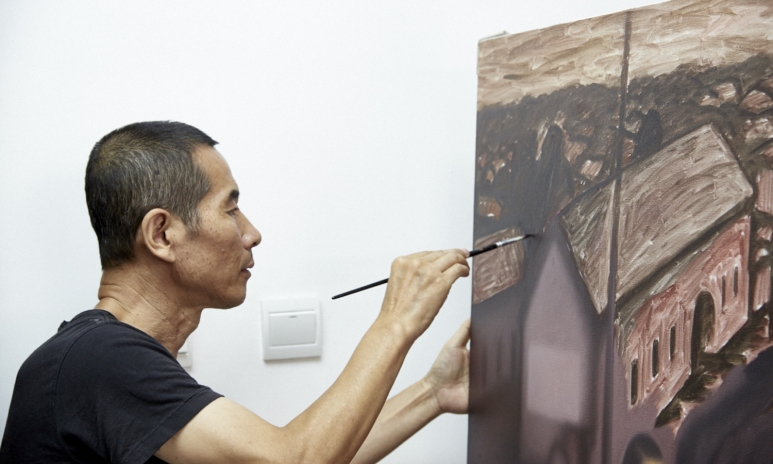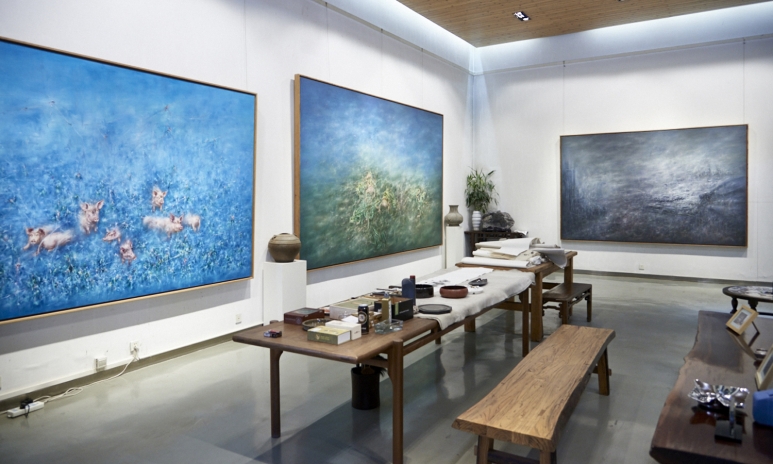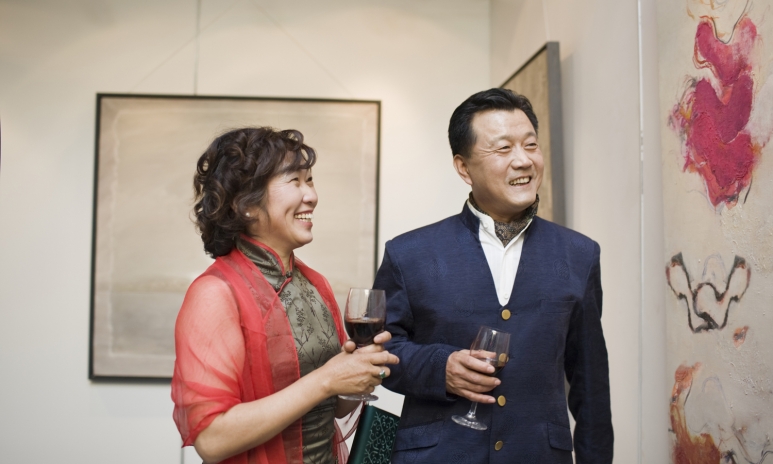Six things to consider for new art investors

Photo: Courtesy of Art Futures Group
While stocks, bonds and real estate are the most common investment tools, you can pretty much invest in anything that you think will rise in value. One increasingly popular alternative investment vehicle is art, thanks to its high upside potential.
Read more: Get To Know The 15 Biggest Art Collectors In Hong Kong
But art markets play by a complex set of rules, and it’s important to do your research and understand the marketplace. Hong Kong-based Art Futures Group, Asia’s first company to provide an end-to-end art investment service, gives us some advice on things to consider when you start building an art investment portfolio:
1. Style 
Learning Partners No.7 by Huang Yin (Photo: Courtesy of Art Futures Group)
Think you’ve heard them all? Impressionism, Cubism, Art Nouveau and Renaissance are just a handful of the hundreds of styles on the market. Some are extremely rare and nearly impossible to obtain. It’s critical to select a fairly-priced style with growing demand and a clear exit path—one of the more robust segments of the art market today is Chinese contemporary.
2. Artist type
Pan De Hai, an up and coming mid-career contemporary Chinese artist. (Photo: Courtesy of Art Futures Group)
In the investment art world, artists are generally classified into three categories: emerging, mid-career and blue-chip. The classification is driven by the value derived from the sale of works in the secondary auction market. While the high-profile nature of blue-chip artists can seem appealing, percentage returns are typically low.
In contrast, the work of emerging artists can yield significant returns as their fame and popularity increase. However, with the profit potential of emerging artists comes considerably greater risk. Emerging artists are largely unproven at auction and identifying long term winners can be nearly impossible.
Mid-career artists are at the intersection of the two extremes. They have a proven track record at auction houses without the blue-chip price tag. Investing in mid-career artists is similar to purchasing stock in a company with a proven business before their IPO—it’s an opportunity to buy before the broader investment community begins to notice.
3. Purchase method

Artist Lv Shun's studio in Beijing (Photo: Courtesy of Art Futures Group)
Art buyers have traditionally been limited to buying from either the primary or secondary markets. Buying on the primary market refers to a purchase from a gallery or art dealer. The galleries and dealers work as an intermediary between artists and buyers, adding a markup for their services.
Secondary market purchases are made through auctions, typically at a significant premium on top of the original price.
Direct purchases are a relatively new option, but they offer guaranteed provenance, certified authenticity and potentially greater returns. Art Futures Group, for example, offers clients the ability to secure art directly from artists.
4. Provenance
Photo: Thinkstock
An art valuation report is prepared by an independent, qualified professional valuer and a certificate of authenticity is signed by the artist, giving you full legal title and provenance of your purchase.
To eventually sell your art, you must be able to guarantee its authenticity. During the purchase process, this is a critical aspect which cannot be overlooked. In many cases blue-chip artists are deceased, making verification a complex matter. Works by emerging and mid-career artists are much easier to verify—it’s as simple as asking the artist.
5. Storage
Photo: Courtesy of Art Futures Group
If you choose to store your art, selecting a location is an important consideration as it will impact the taxes due. Hong Kong is one of the world’s most advantageous locations because of its status as a tax-free port with no GST, VAT, capital gains tax, wealth tax, import duty or estate tax.
In Hong Kong, there are no royalties to be paid on the purchase of artworks, meaning all profits go to the seller. While it may seem alluring to place the art in your home or office, a secure facility can provide a greater degree of protection.
6. Exit strategy
Photo: Thinkstock
In order to realise a return on your piece of art, you must be able to sell it. Having a clear exit strategy is crucial to making a profit. Working with a trusted art professional can provide access to auction houses, galleries, museums and collectors.
Like this story? Sign up for our weekly newsletter to get our top tatler_stories delivered.
